Last updated: 26 June 2023
Updated June 2023. Are you currently looking for the best places to go sightseeing in Bologna Italy then you’ve come to the right place. In this post, we will cover all the best places to go during your visit to one of our favourite cities in Italy, Bologna! Not only does Bologna offer some absolutely fascinating history and beautiful architecture to explore and admire but we can confirm, after much research (and several loosened belt-loops), that it deserves its reputation as the foodie capital of Italy!
Here’s some other interesting facts about Bologna; did you also know that Bologna is home to the oldest university in the world which first started in 1088? Or that it’s the birthplace of Maserati? And home to UNESCO’s largest medieval city centre? Are you ready to discover just what you can experience on a weekend in Bologna?
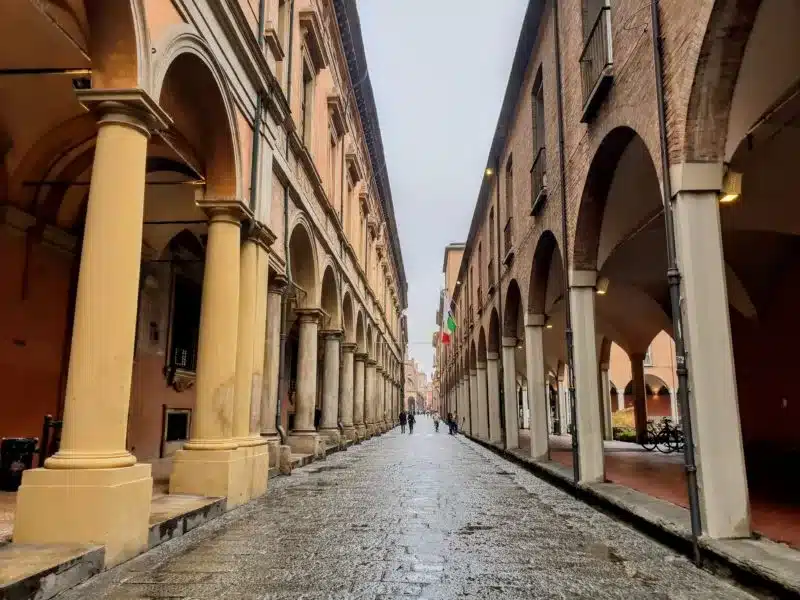
[lwptoc]
Some of the links in this post are affiliate links which means that if you click on them and make a purchase, at no extra cost to you, we may earn a small commission. This helps keep the lights on at Roaming Required HQ. We sincerely thank you for your support.
Where is Bologna?
The city of Bologna is the capital of the Emilia-Romagna region in Northern Italy, a region best known as being home to some of the most amazing food in Italy. Centrally located which makes ideal for quick connections via high speed rail to Florence in 30 min, Milan in 1 hour, Venice in 1 hour 20 min, and Rome in 2 hours
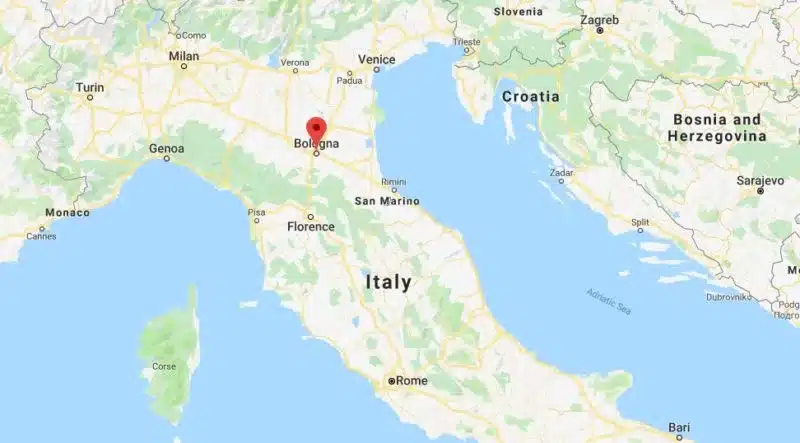
Getting to Bologna
If you’re flying out of London then the good news is that multiple airlines fly direct to Bologna, including low-cost carriers such as Ryanair and easyJet, which means that you can find reasonable-priced flights, providing you book early enough.
Bologna is one of those fantastic petite sized airports. Located just 7km from the centre of town, making it an incredibly quick and easy connection to the city centre. A direct airport bus, BLQ, will take you direct to Bologna train station for €6 one-way.
However, if you have a car and have a little more time to go exploring then we can suggest taking the Eurotunnel across and driving through France and Switzerland into Italy. Plan your route correctly and go through the Stelvio Pass. This iconic section of steep winding road wanders between the mountains of the Ortler Alps.
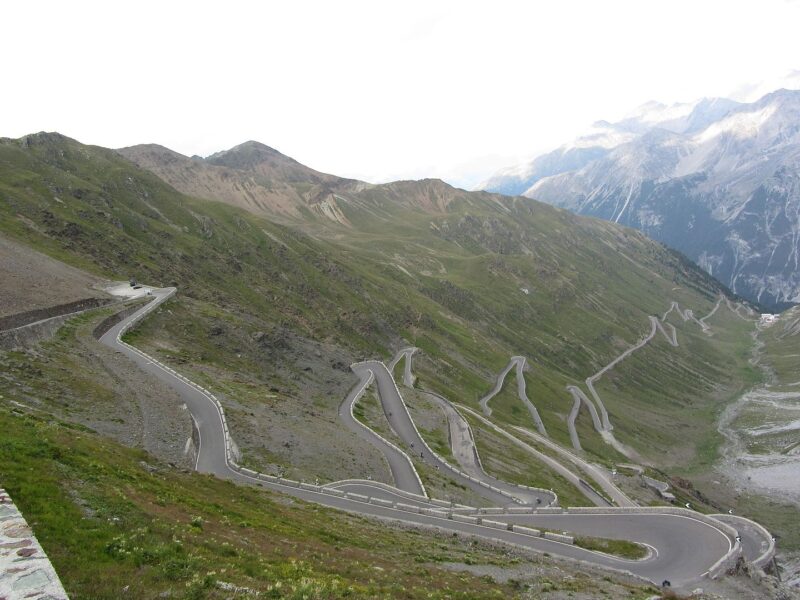
Just avoid last Saturday of August or first Saturday of September when the Stelvio Pass is closed to everything other than bicycles for the annual Stelvio Bike Day.
Whilst a road trip can be a wondrous scenic adventure, you do need to be mindful of the many toll roads in France, Italy and the vignette required for Switzerland.
Things to do in Bologna Italy
One of the best things about visiting Bologna is that there is no lack of places to visit. The biggest challenge that you’re going to face, just like us, is choosing where you want to spend your time, there’s no shortage of tours to take, museums to explore, churches to admire, and restaurants to experience.
The good news is that it doesn’t matter if you’re visiting for one day, one week, or one month, there’s always something to have you returning for another visit. So without further ado, let’s explore just some of the many things you need to include on your Bologna Must Do List!
Exploring the Porticos
Bologna is considered to the Home of the Porticos. And it is little wonder that these magnificent structures are being considered for UNESCO World Heritage listing. Bologna is home to over 38km of covered walkways throughout the city making it perfect all year around as it protects from the blistering sun during summer and the rain and snow during the winter months. In addition to the city porticos, there is simply awe-inspiring 4km long wall of porticos leading to the Sanctuary of San Luca.
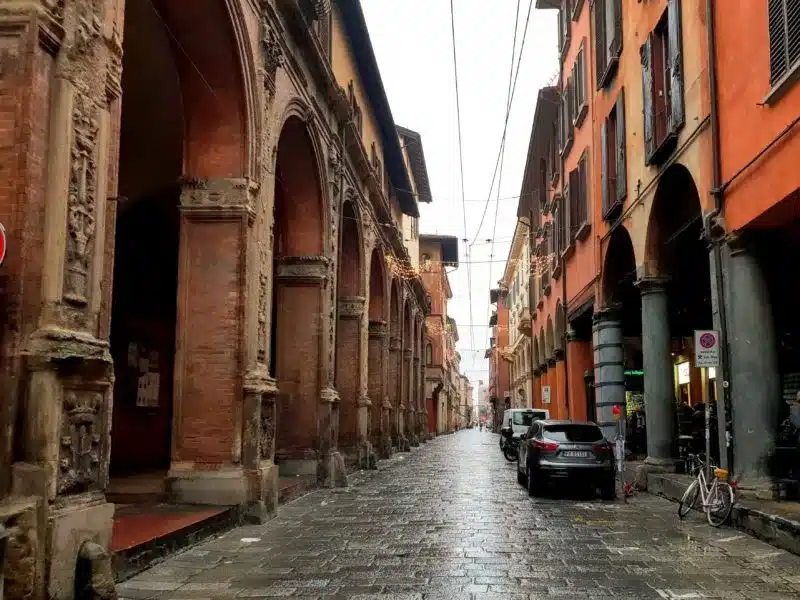
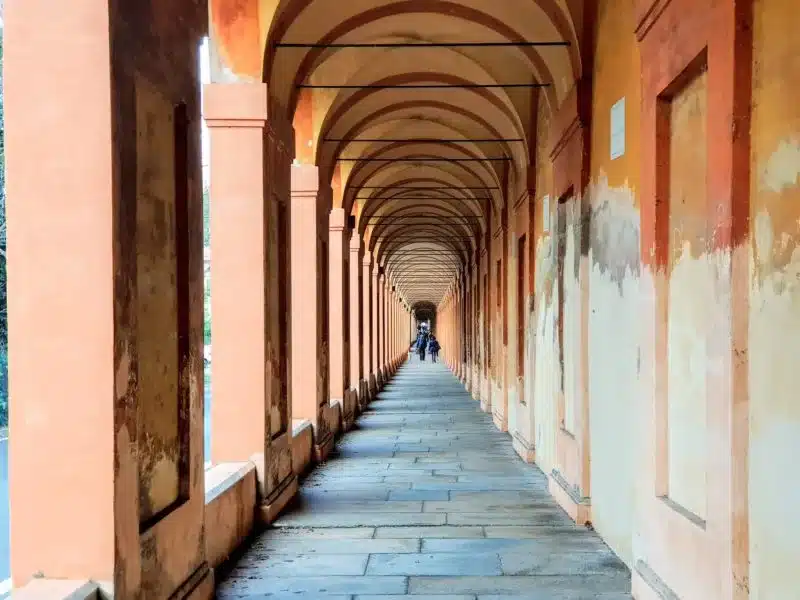
Fun Fact: Did you know that a law passed in 1288 which required the building of porticos on private lands but that they needed to remain open to public. If you’re interested in discovering more of the incredible porticos, here’s what you can expect from a visit to San Luca.
Piazza Maggiore
Piazza Maggiore is the main square in Bologna and since 1200 it’s been the centre of city activity, and today that tradition continues as it’s the locale for many a walking tour, the location of the tourist information office, and the cultural heart of the city. It’s in Piazza Maggiore where you will discover some of the most historic buildings and should be the first place to start your adventure in Bologna.
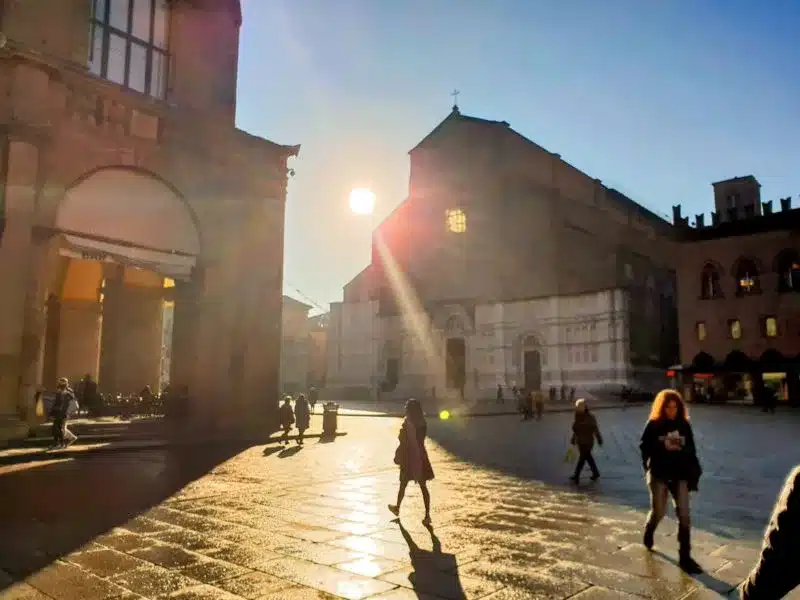
Basilica di San Petronio
There’s no missing the Basilica di San Petronio when you’re standing in Piazza Maggiore, it dominates the square. With its eye-catching facade, which consists of two distinct architectural styles which can be determined by the different building materials – the lower half in white marble with carvings depicting scenes from the Old and New Testament and the enormous upper half of the church built from brick. There are so many bricks that the church is recognised as one of the largest brick churches in the world!
Believe it or not but as magnificent as the church is, it stands technically incomplete and unfinished, despite being recognised as the 15th largest church in the world.
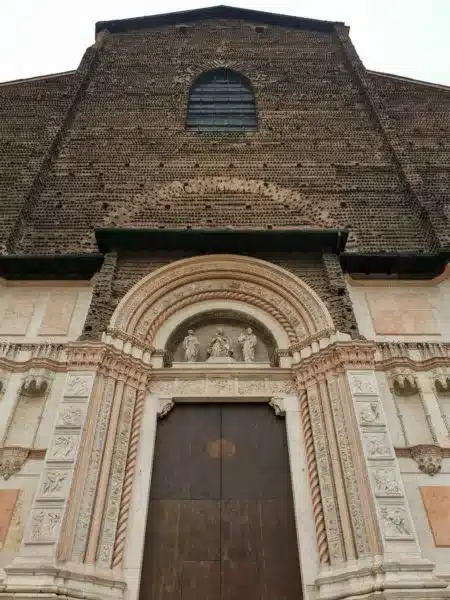
The History
The story of the Basilica of San Petronio is a fascinating one. Construction began in 1390, under the direction of Antonio di Vincenzo, and named in honour of Saint Petronio, the 5th century Bishop of Bologna. The church was planned to be the largest in the world and actually required the demolition of several buildings to make space for its construction.
It’s said that when the news of the construction of this enormous building, which would soon overtake St Peter’s Basilica as the world’s largest, reached Pope Pius IV that he immediately called for an end to the works and instead requested the creation of the nearby Archiginnasio building, leaving the Basilica of San Petronio unfinished.
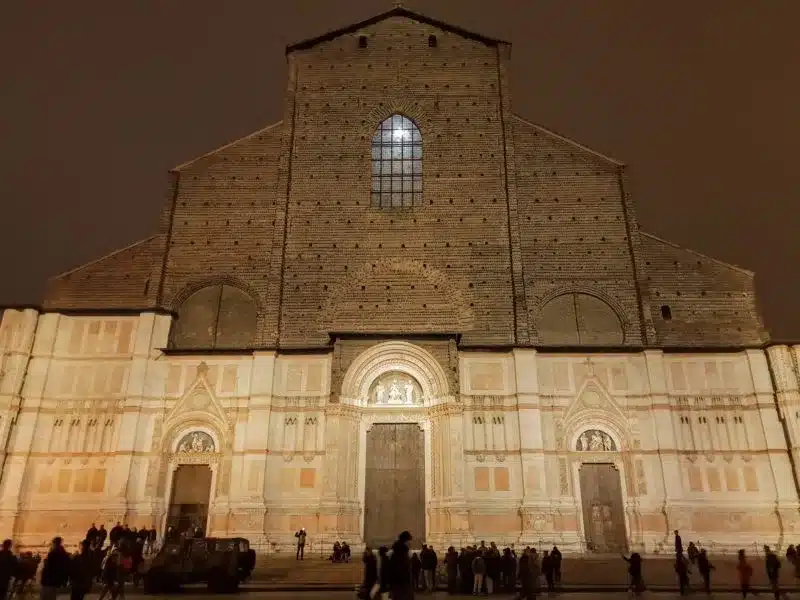
The Meridian Line
When you visit the Basilica di San Petronio and explore the beautiful interior you must make sure to take note of the thin brass line in the church floor, which stretches to an amazing 67 metres. This is the largest sundial in the world! This the Meridian Line, installed by astronomer Giovanni Cassini in 1655, and it was designed to track the movement of the sun, through a small hole in the ceiling (27 metres high) along the line from midday each day (weather permitting, of course).
Fun fact: Did you know that in 1530 Pope Clement VII crowned Charles V Emperor of the Holy Roman Empire inside the Basilica of San Petronio? The location for the crowning was chosen by Charles V himself.
Inferno by Giovanni da Modena
As you walk around the interior of the church you will come across one of the 22 chapels dedicated to various Bolognese families, Chapel of the Magi, which is considered one of the most famous.
The Chapel of the Magi contains various frescoes created by Giovanni da Modena but it’s his Inferno, inspired by Dante, depicting various sinners in Hell. One of the most controversial is the depiction of the Prophet Muhammad. If you visit and wonder why the military is stationed out the front of the church it’s because of an increase of security threats against this 15th century painting.
Fun Fact: Did you know that the Basilica di San Petronius is the final resting place of Saint Petronius and Napoleon’s sister, Elisa Bonaparte?
Interested in booking a private two hour tour to explore the Cathedral of San Petronio and learn all about its fascinating history? Book Tickets
Palazzo d’Accursio
One of the many reasons why we love visiting Italy is that it’s home to so much history, even its civic buildings are bursting at the seams with centuries with stories from long ago and Bologna’s city hall is no exception.
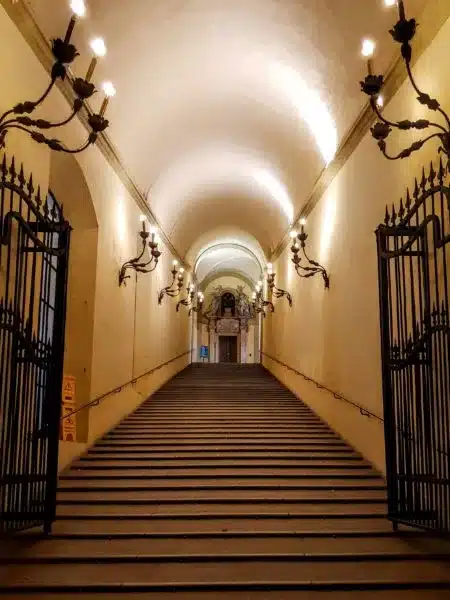
The famed Palazzo d’Accursio, located in Piazza Maggiore, was constructed in the 14th century and contains a comprehensive art collection and it’s perfect instagrammable staircase. At the top of the staircase is a statue of Pope Gregory XIII who was responsible for reforming the Julian calendar. The staircase leads visitors to the first floor where Hercules Hall and City Council Hall are located and on the second floor is the Farnese Chapel and Hall.
Palazzo Re Enzo
This was one of the first buildings which captured my imagination during our evening visit to Piazza Maggiore, also referred to as Palazzo Nuovo (the New Palace). The imposing 13th century building looked captivating with the night lights highlighting its historic facade and combined with the evening fog it was too enticing not to photograph.
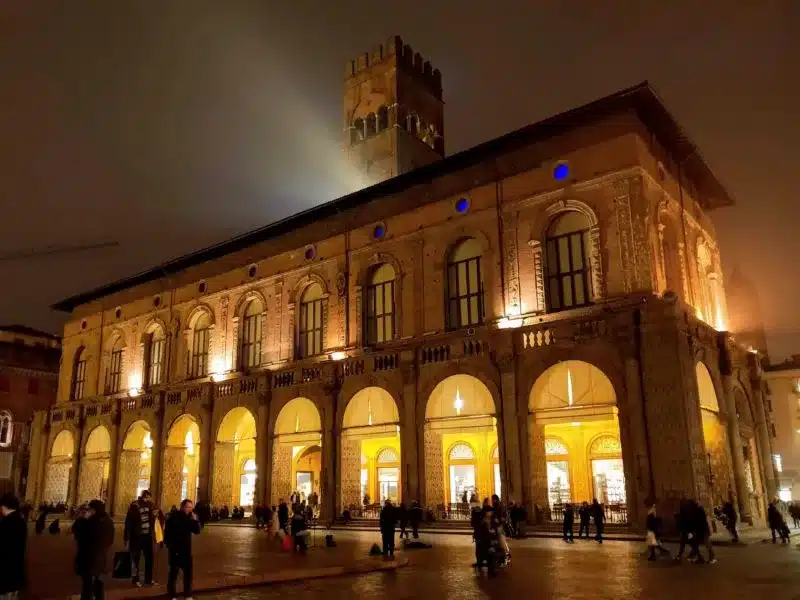
Palazzo Re Enzo was constructed between 1244 and 1246 and if you’re wondering where the name came from, it was named after Enzo of Swabia, King of Sardinia, who captured in 1249 during the Battle of Fossalta and was imprisoned in this building for 23 years until his death in 1272, despite the many attempts by his father, Emperor Federico II, have Enzo released.
Located in front of Palazzo Re Enzo is the Fontana del Nettuno, Fountain of Neptune, by Jean de Boulogne (Giambologna) in 1563. A work of Baroque art, the fountain is the perfect place for photos, just make sure you plan the time of day right to capture in the best light.
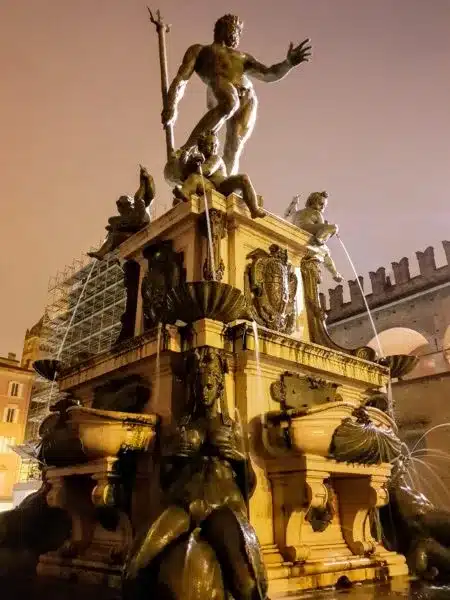
Discover the Via Emilia
Ok history fans you are going to love this!
Did you know that was once a Roman road which ran from Rimini to Piacenza in 187 BC? This road ran in a fairly straight line for about 270km (176 miles) and passed through multiple cities including Bologna AND if you head to Via Rizzoli (the main street in town) you’ll stand on the same site where Romans would have travelled 2000 years ago! Ok, so it’s not the same road but the location in Bologna is the same. I don’t know about you but that really captured my imagination.
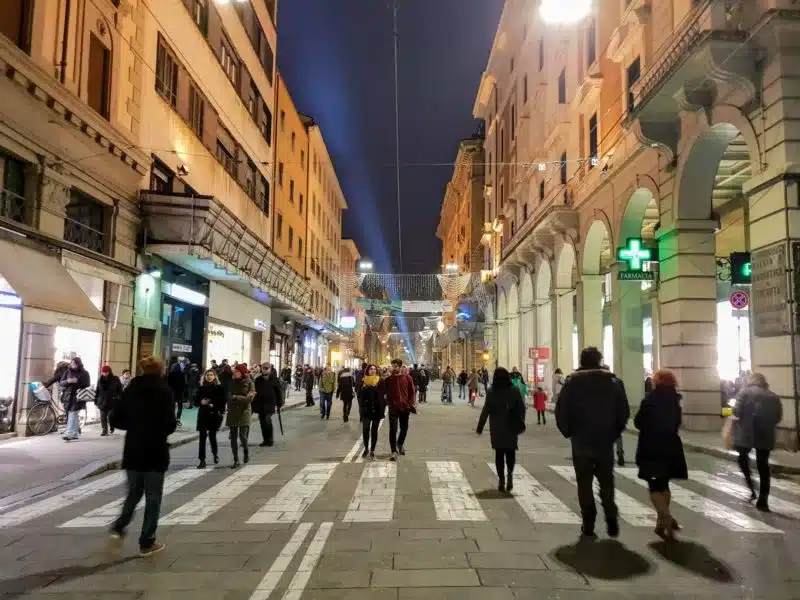
It was in Rimini where the road would have connected to Via Flaminia which ran straight into the heart of the Roman Empire, Rome. This was part of a series of roads which led to Rome so if you’ve ever wondered where All roads lead to Rome comes from…
Now, if you’re a sports car fan then the Via Emilia is going to be your best friend because there’s a route along the way referred to as The Motor Valley, which will lead you to all the important factories and museums dedicated to Ferrari, Maserati, Lamborghini, and Ducati.
The Two Towers
Pisa might be home to one leaning tower but Bologna is home to TWO…
The Due Torri, The Two Towers, are symbols of the city of Bologna and it’s easy to see why, they dominate the skyline. The two towers, Garisenda and Asinelli, named for the families who built them, were constructed at the beginning of the 12th century and these imposing stone guardians have stood silently protecting Bologna for almost 900 years.
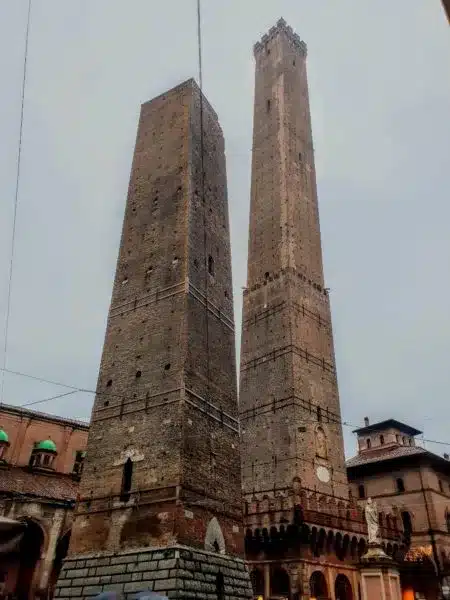
The taller of the two towers, Asinelli, stands 97.2 metres high and leans a noticeable 2.33 metres, was designed to be a lookout and stronghold. The view from the top is unparalleled and should be completed during your visit. The only thing you need to conquer first are the 498 steps to the top…
The smaller of the towers, Garisenda, stands 48 metres high and leans 3.22 metres.
Fun Fact: Walking the 498 stairs will have you following in the footsteps of the German philosopher Goethe who climbed the tower during his visit to Italy.
There has been talk of installing a lift into Torre Asinelli on multiple occasions dating back to 1887 when it was first mentioned ahead of the 1888 World Expo but nothing has ever come of it so that just means you need to pack your walking shoes if you plan on climbing.
Basilica di Santo Stefano
Considered to the heart of historic Bologna, the complex of Santo Stefano, also referred to as the Sette Chiese or the seven churches is a series of religious chapels and buildings all located within a very close proximity to each other. It was said that the original church was built by Saint Petronius in the image of the Church of the Holy Sepulchre located in Jerusalem, one of the holiest places in Christianity as it’s said to be the site where Jesus was crucified and the location of his empty tomb, which has been expanded over the centuries to now include seven churches.
If you’re interested in exploring the history of the Basilica di Santo Stefano on a two hour private tour which also allows you to sample regional delicacies then this tour might be of interest.
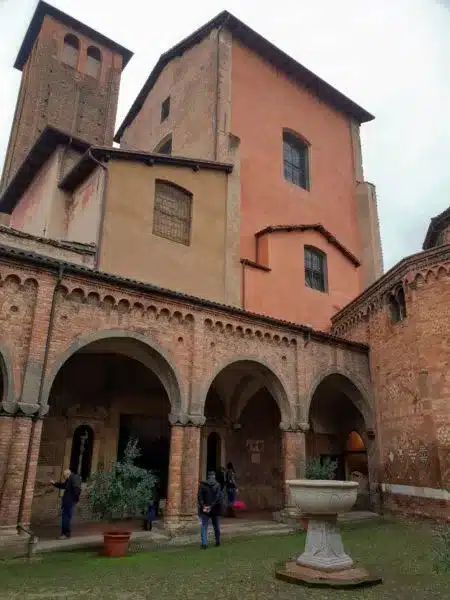
Fun Fact: Did you know that the site of the seven churches was built atop a Roman temple which was dedicated to the goddess Isis, the protector of fertility?
According to local tradition, it’s said that the complex was founded by Bishop Petronius in the 5th century to serve as a type of pilgrimage to pass through the stages of the Passion of the Christ, which is the time period leading up to Jesus’ arrest, trial, and crucifixion. The seven churches include;
- The church of the Crucifix (and Crypt)
- Church of the Holy Sepulcher
- Church of Saints Vitale and Agricola
- Pilate’s courtyard with washbasin (where Jesus was condemned)
- Church of the Martyrium (considered to have one of the best preserved cloisters in Bologna)
- Cloister of the Benedictines
- Museum of Santo Stefano
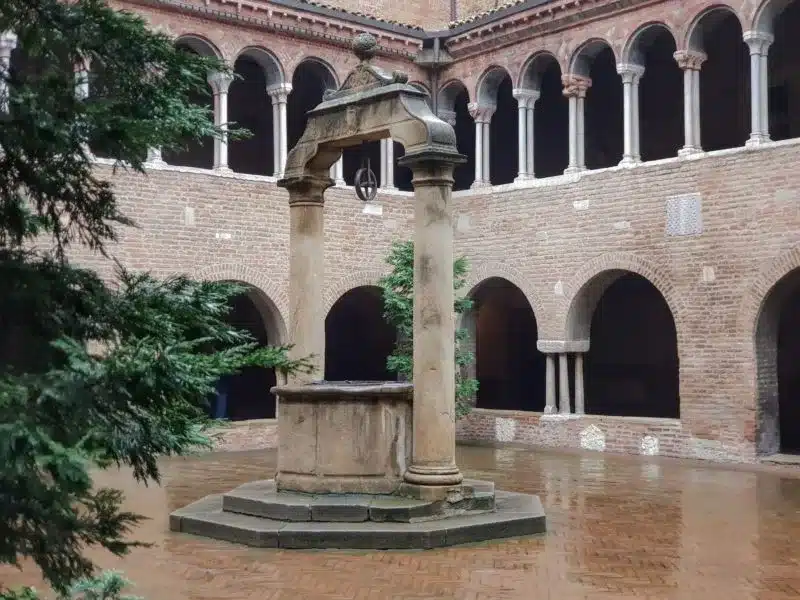
Hidden Canals
Did you know that Bologna was a city that once had its own thriving network of canals, which stretched over 60km? That’s right, canals weren’t just exclusive to Venice. The waterways were needed not only for transport, both passenger and commercial, but also to produce energy to support various industries which included mills, spinning, and tanneries.
The canals first started in the 12th century, with a hydraulic system and locks, and remained in use up to the 1930’s when they were covered. The canals still remained accessible until the earthquake in 2012 which forced a closure to the underground canals.
Hidden Canals Sightseeing Spots
If you’re interested in viewing the remains of the Bologna canals then here’s a few suggestions of where to go:
Via Piella
Head over to Via Piella for a view of the canals, it’s only a small area but at least you’ll be able to see the hidden canals which were once an important part of Bologna. If you’re using Google Maps then do a search for Finestrella or Facing on the Moline Canal.
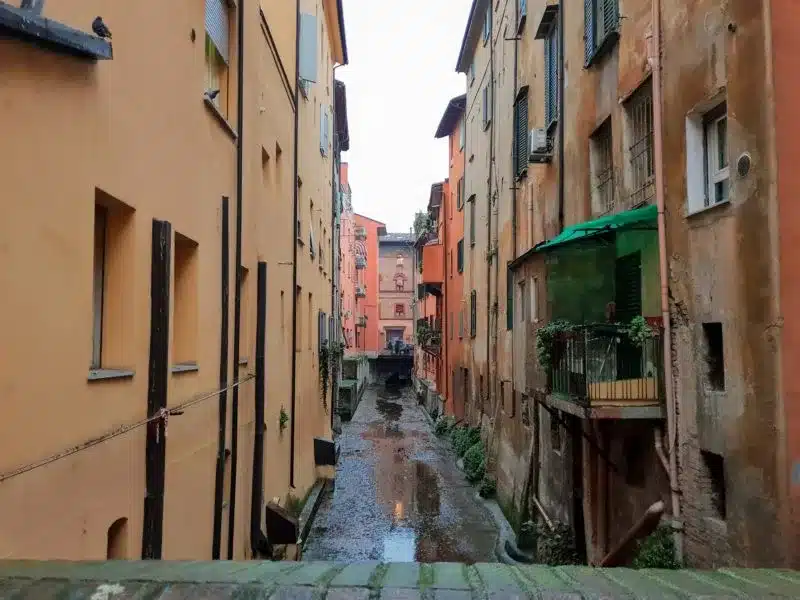
Viale Giovanni Vinici
Check out where the canals started with the entry point of the waters from the Reno canal into Bologna. You can still see the original iron gratings hanging on the 14th century walls which were used to prevent debris from entering the city and causing havoc with the waterways.
Via Malcontenti
If you head along Via Malcontenti then you’ll cross a small bridge and this is where your vantage point is so don’t walk too quickly. This is where you’ll see one of the only places where water is still running in the canals
Salara (Via Don Minzoni 18)
Dating back to 1548, this is the only remaining building from the time where Bologna was an important port city. It was from this spot where boats transported goods and people to Ferrera and Venice, a trip which lasted 40 hours!
San Luca Monastery
The San Luca Monastery (the Sanctuary of the Madonna di San Luca) is one of the most impressive and enduring symbols of Bologna with it’s incredible porticos stretching to almost 4km in length and containing an incredible 666 arcades, it must be seen to be believed.
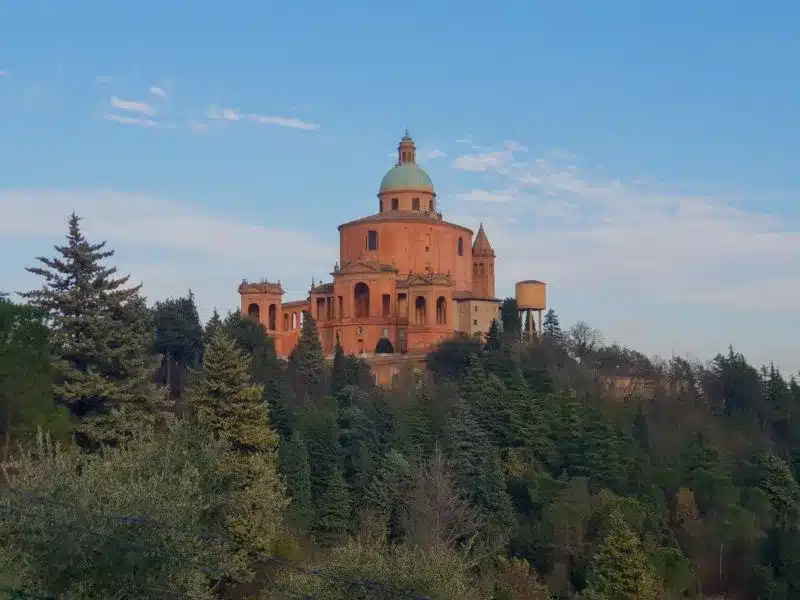
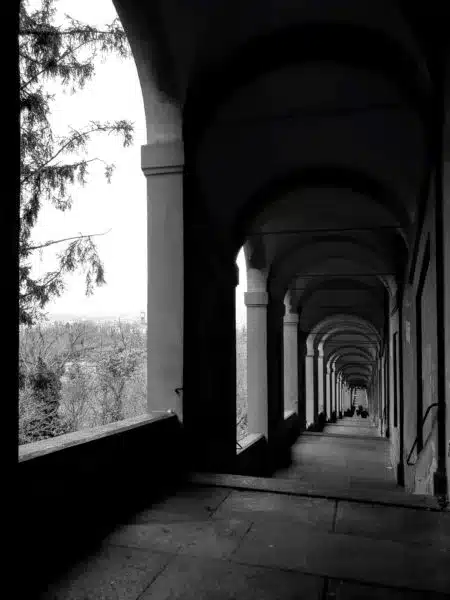
If you’d like to learn more about San Luca Monastery and what to expect from a visit then check out this post I wrote about our visit.
Places For Next Time
We didn’t get a chance to explore everything we wanted to so here’s the list of places that are still on our list:
Archiginnasio of Bologna
When I first saw photos from inside the Archiginnasio of Bologna I was immediately sold! It was beautiful and historic! The building was the site of the old university and the interior still has various original coat of arms from various families adorning the walls. A combination of books and history puts this firmly on the list. It is also home to an Anatomy Theatre, constructed out of cedar wood, which was used by the Faculty of Medicine to conduct an assortment of experiments.
Torre Galluzzi
This is a stone fortress that once belonged to the powerful Galluzzi family in Bologna. Take a moment and let that sink in, this family was so rich and powerful that they had their own personal fort in the middle of the city!
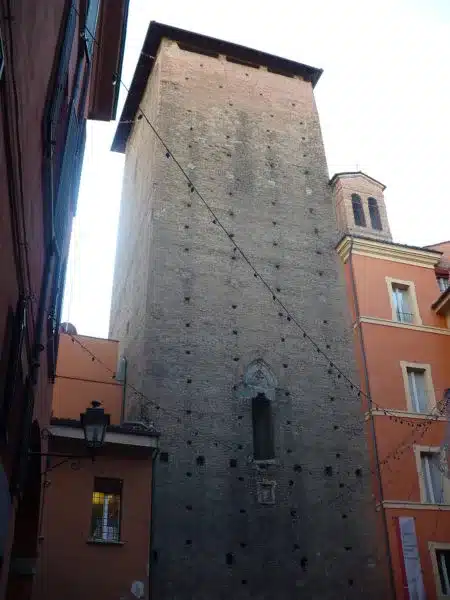
Built in 1257 and standing 30 metres high, with very thick walls, and a really unusual entrance door….it stands 10 metres above ground! There are small holes, located just beneath the door in the tower facade, where wooden beams were inserted to provide walkways from adjacent building windows!
Biblioteca Salaborsa
This is one place we took photos from the exterior but didn’t get a chance to go inside so we’ll make sure to visit on our next trip because it’s Bologna’s most famous library which combines history, archaeological excavations, and books across two floors.
The Museo Civico Medievale
You know that we LOVE a good museum and there were so many on offer in Bologna that we simply didn’t have the time to visit all the ones that we wanted but next time we visit then the Museo Civico Medievale is right at the top of my list because it is home to numerous works of art from the 7th to the 15th century, a time where Bologna was at its most powerful and influential.
Day Trips
With a number of cities within easy reach of Bologna just via a short train ride, there are a number of places to consider for a day trip. Cities including:
If you’re interested in finding out more about day trips from Bologna and really maximising your time in the region then we suggest you have a read of our other post which covers 5 easy day trips from Bologna. If you have any questions or need a bit more info about planning your trip then please don’t hesitate to reach out to us because we’d be more than happy to help you make your holiday truly wonderful.
Let’s Talk Food
Is the thought of all this sightseeing making you hungry? Let’s face it, all the incredible history wasn’t the only reason that you decided to visit Bologna, right? All the delicious food had to be a contributing factor.
Check out Roma’s post if you’re looking for the inside scoop on the best food to eat in Bologna, including Mortadella, ragu, fresh pasta, Parmigiano Reggiano, aperitivo, and of course Espresso. Warning: you don’t want to read it whilst hungry!
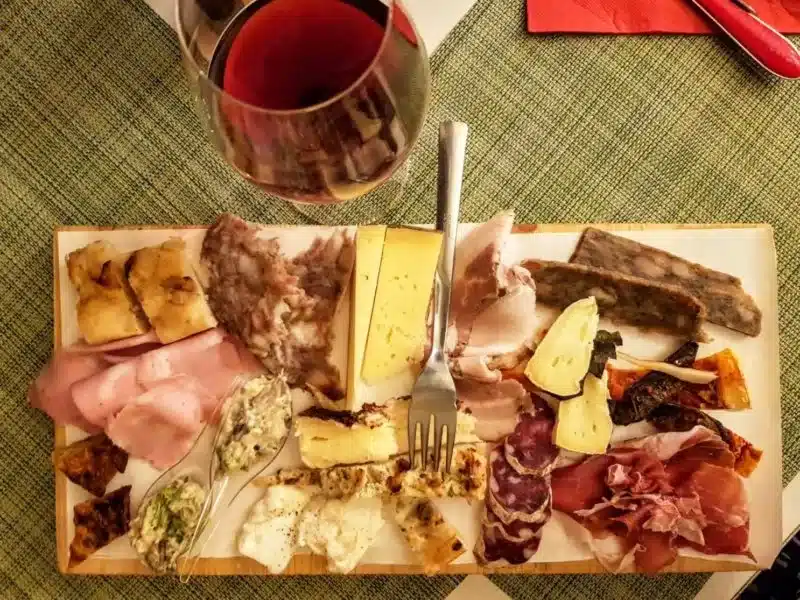
Cooking with a local
What’s the best way to discover the true magic of Bologna cooking? Stepping into the kitchen of a local and have them share their knowledge with you! There’s no better way to understand what makes a truly great pasta than by being shown by an expert. This cooking experience, Le Cesarine has been made available to travellers from around the world since 2004 and was designed to share unique local knowledge and explain the intricacies of Italian heritage.
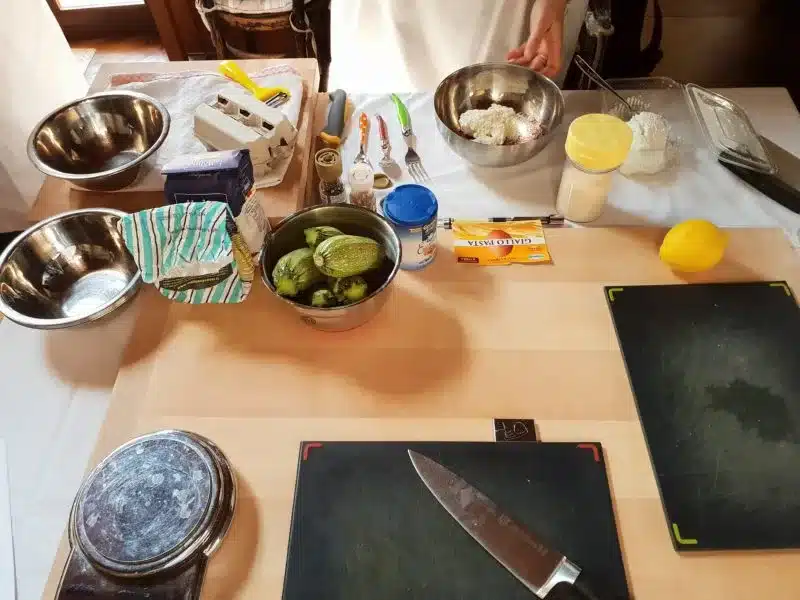
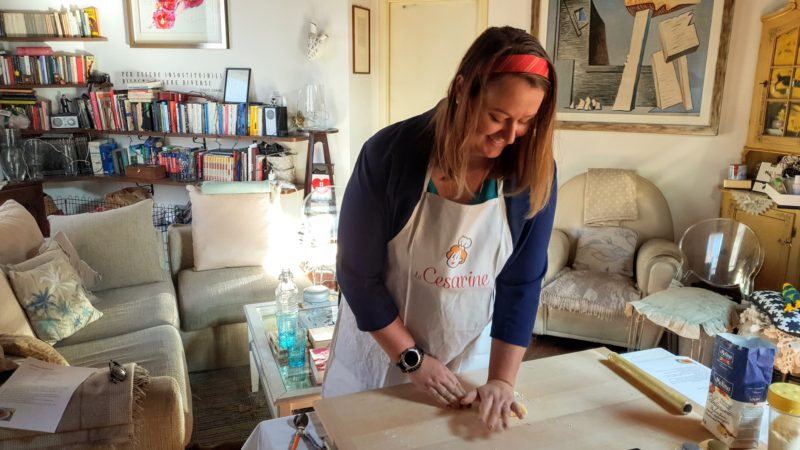
And that’s exactly what we did during our weekend break in Bologna, we stepped into the kitchens of our fabulous hosts Diva and Petragnani and experienced first hand how to create delicious pasta, stuffed zucchini, and melt-in-your-mouth meatballs. I can honestly say that this was one of the best dining experiences we’ve ever had and we have our recipes displayed proudly in Roaming Required HQ.
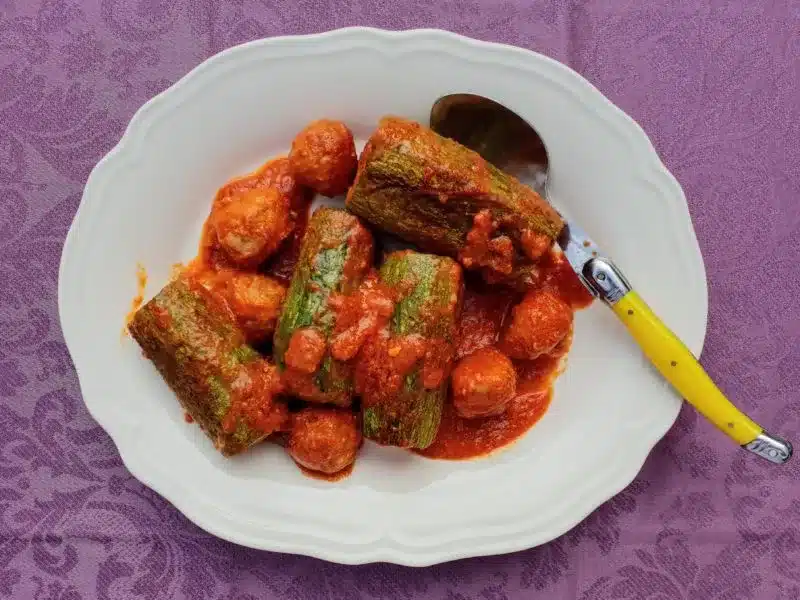
Final Thoughts
If you’re planning a visit to Bologna then be prepared to step into another world filled with centuries of history, incredible (and photogenic) architecture, and perhaps bring your stretchy trousers because the food is second to none! There’s so much to love about a visit to Bologna that you’re probably not going to be able to see it all in one go but that’s hardly a bad thing, it just gives you another reason for another visit. Happy Travels!
[…] gems. Despite being sandwiched between two of the nation’s great gastronomic centres; Bologna synonymous for ragù, and Parma famed for its ham, Modena can hold her own in the […]
[…] trip to the region may start in Bologna, the capital of the Emilia Romagna, and charm you with its stunning porticoes, the hilltop monastery of San Luca and a huge selection of incredible restaurants to dine at, it […]
[…] gems. Despite being sandwiched between two of the nation’s great gastronomic centres; Bologna synonymous for ragù, and Parma famed for its ham, Modena can hold her own in the […]
[…] Sightseeing in Bologna Italy […]
[…] Italy I really cannot wait to visit because it’s all about the food. I want to base myself in Bologna, do day trips to cute towns in Emilia Romagna and eat all of the Parmigiano Reggiano, balsamic […]
I lived 3 years in Bologna & fell so much in love that I consider it my town now. Or as the Italians put it: my town of the heart. Funny how critical we usually become when someone else dares write about what we love. But I must say that your article is very thorough and will be a good guide for city hoppers! Of course I miss here the good bars with cheap \’aperitivi\’, the squats (do they still exist?), the Sunday produce market near the Lumiere cinema, the concert venues… But they don\’t belong here. You did a great job!Oh and yes, go to Sala Borsa! That\’s where I spent most of my time on free days! Free toilets too!
Great post guys, full of so much information. We will definitely have to head there one day, it looks beautiful.
I can see you guys being very happy exploring Emilia Romagna region generally!
Ooh I love this, guys! I think Bologna may be my next Italy trip. I’ve been wanting to go ever since I found a picture of my grandad there during the war – need to go recreate his photo! 🙂
Oh Em that’s a great reason to go to Bologna! It’s a wonderful short break destination, totally doable for a weekend however, like many places, the longer you can spend exploring the better!